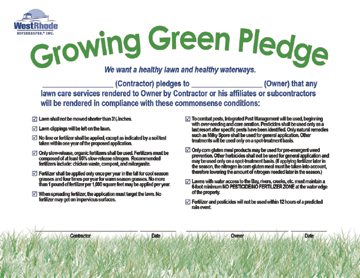
Volume XVII, Issue 17 # April 23 - April 29, 2009 |
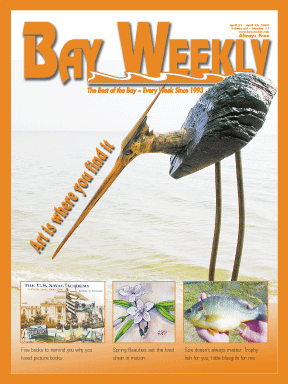 |
|
|
by Dr. Frank Gouin
How to Grow a Green Lawn — without Chemicals
This advice is both gardener- and earth-friendly
Lawns fail for four reasons: Compacted soils; acid soils; poor nutrition; mowing too short. If you correct all four of these problems, you can have a lush green lawn without loads of chemicals.
Take if from me, Mother Nature’s spokesman, and not from chemical companies and contractors who profit at the Bay’s expense. Problem by problem, here’s how to tend your lawn without harming the earth.
Problem 1: Soil compaction
The Problem
If you can’t press a garden trowel through your turf and into the soil to a depth of at last four inches, your soil is too compacted to grow a healthy lawn. Areas of compacted soil can be localized, where there is heavy traffic, or compaction can be widespread, as in areas of new construction.
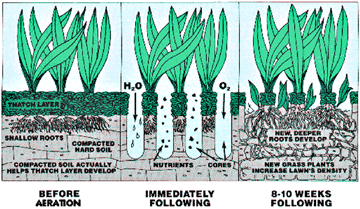
 Your Solution
Your Solution
Core-aerate, spade or rototill the soil to a depth of six to eight inches. Then add compost. A core-aerator works by removing a half- to three-quarters-inch-diameter core of soil at four- to six-inch intervals to a depth of three to four feet. After core-aerating, spread two to three cubic yards of compost over the lawn and rake it into the holes. The compost will provide an infusion of humic acid as well as slow-release nutrients directly into the soil. Repeat at two- to three-year intervals or until the lawn is uniformly healthy.
Problem 2: Acid soil
The Problem
Lawn grasses grow best in soil pH between 6.0 and 6.8 and with essential nutrients such as phosphorus, potassium, calcium and magnesium in the medium to high range. Eastern soils are naturally acid due to their parent materials, the acid rains that this area experiences year in and year out and repeated applications of fertilizers, most of which are acid in nature.
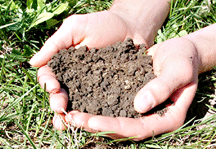
![]() How can you find out if your soil’s in the right range? Only by submitting a representative sample from the lawn to a reputable soil-testing laboratory. I highly recommend the A&L Eastern Agricultural Laboratory (www.al-labs-eastern.com) in Richmond, Virginia.
How can you find out if your soil’s in the right range? Only by submitting a representative sample from the lawn to a reputable soil-testing laboratory. I highly recommend the A&L Eastern Agricultural Laboratory (www.al-labs-eastern.com) in Richmond, Virginia.
Your Solution
The only effective means of correcting acid soil is by applying limestone. Since most of the soils in southern Maryland are nearly deficient in magnesium, I always recommend dolomitic limestone or garden limestone. The exact amount of limestone can only be determined from a reliable soil test result.
When the soil is at its proper pH for growing grass, nutrients are available to the roots, thus giving grass a balanced diet.
Problem 3: Poor nutrition
The Problem
There is no doubt in my mind that fertilizers and pesticides applied to lawns enter Chesapeake Bay. Many of the high-nitrogen fertilizers applied to lawns should be banned, as should weed-and-feed fertilizers. Additionally, excessive nitrogen on your lawn can cause disease problems such as fusarium. Even so, some advertising would lead you to believe that a lush green lawn can only be achieved by the liberal use of fertilizers and weed killers.
Grasses can absorb large quantities of nitrogen. But if nitrogen is applied when the roots are not absorbing and expanding, the excess finds its way into the groundwater and eventually into the Bay. Fertilizers and pesticides that fall on sidewalks and driveways enter the water stream directly.
Your Solution
Like the human body needs a balanced diet, grasses that make up the lawn also need a balance of nutrients from the soil. Based on soil test results, a balanced nutritional program can be prepared for growing a healthy green lawn. Since cool-season grasses such as bluegrass and fescue do most of their absorption of nutrients in the fall, if nutrients are needed they should be applied only in late September or early October. Never apply more than one pound of nitrogen per 1,000 square feet (10 pounds of 10-6-4 fertilizer per 1,000 square feet).
If you mow your grass tall and let the clippings fall, you will be returning a third to a half of the nutrients back to the soil. Clippings filter down and disappear quickly between the blades. When they come in contact with the soil, they compost in place because temperatures are cool and the atmosphere is moist. Not only will you save money as a result of recycling these nutrients, you will also save time in not having to collect and dispose of grass clippings. Thus the saying Cut it tall and let it fall.
Spreading compost over the lawn is an effective means of applying a slow-release fertilizer and of eliminating thatch. Thatch is an accumulation of organic matter over the grass roots caused by mowing the grass too short, not collecting the clippings and not liming the soil. It can become a severe problem, especially with warm-season grasses such as Bermuda grass and Zoysia grass. These grasses are also susceptible to severe insect problems.
Top dress the lawn with compost at the rate of two cubic yards per 1,000 square feet every two years for a near perfect lawn untroubled by disease.
If your lawn is infested with grubs, the best and most effective control is Milky-Spore. Milky-Spore is an environmentally safe method of controlling grubs of June beetles and Japanese beetles. Closely follow the directions for application. Do not apply as a fertilizer.
Problem 4: Mowing too short
The Problem
Mowing the grass too short does more to weaken a lawn and to encourage weeds to grow than anything else.
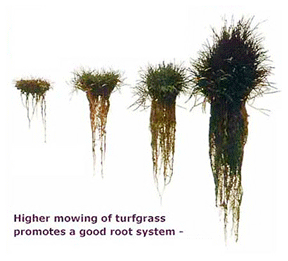
Your Solution
By mowing cool-season grasses such as bluegrass and fescues to a height of no less than three-and-a-half — and preferably four — inches, you encourage strong growth, deeper rooting and crowding out of weeds. A lawn that is mowed to that height throughout the mowing season will remain relatively weed free.
Photosynthesis is how plants convert light energy into food. A long blade of grass is capable of photosynthesizing more than a short blade. The longer the blade of grass, the deeper the roots grow and the tougher the plant becomes.
By mowing the grass tall, you also crowd out such weeds as crabgrass, goosegrass, dandelions and plantain. These weeds like to spread out, but the tall grass forces them to grow upwards, thus reducing their ability to compete for light, nutrients and water. Dense tall grass also helps to smother out the seedlings of these weeds.
The deeper root system of lawns mowed three-and-a-half to four inches are more resistant to drought damage and better able to tolerate traffic. Also, a lawn that is mowed tall loses less water from evaporation than a lawn that is mowed to only an inch or two tall.
